|
Corby
Glen

The market cross at Corby
Glen
This is a sizeable
community seven miles north west of Bourne on the A151 and the first thing you
see on entering the village square is the stone market cross standing on an
octagonal brick base with four steps, erected during the reign of Edward III
(1312-1377) although altered in later years, gathering point for speeches,
sermons and sales for almost eight centuries and now a scheduled ancient
monument and Grade II listed since 1952 while around the corner is the old village pump, although heavily restored.
The Church of St John the Evangelist dates back to the 12th century and is famous for its mediaeval wall paintings discovered under nearly 1,200 sq ft of plaster when the church was being restored in 1939. These paintings are among the most significant mediaeval remains in the country and preservation work was carried out in 1992, financed with funds from English Heritage. The original church had no aisles but they were added 200 years later when the chancel was enlarged and a short tower built.
The nave roof was raised during a major rebuilding programme in the 15th century and the tower was then heightened. Much of the chancel was rebuilt in 1860 while the altar was given in 1976 in memory of John Hedley Lewis, landowner, sportsman and the first chairman of the Lincolnshire County Council. It stands behind 17th century rails erected as a safety barrier for communion tables after William Laud, Archbishop of Canterbury, decreed in 1634 that they should be moved against the east wall and protected in order "that doggs may not gett
in".
The
tower dates from the 15th century and originally had a ring of four bells
installed between 1590 and 1691. They are inscribed in Latin, translation as
follows:
1. I will sound sadly to the sad, joyfully
to the joyous.
2. Not noise but love sings in the ear of God.
3. I sweetly tolling men do call to taste on meats that feed the soule.
4. In the name of Jesus every knee shall bow, of things in heaven, in
earth and under the earth.
When
the bells were re-hung in 1975, the old grammar school bell of 1691 was added as
a service bell and in 1988, a redundant bell from the parish church at
Bassingthorpe, near Grantham, dated 1694 was added, thus bringing the total
number to six. But these have since been removed and replaced with two bells
from St Alban's Abbey, this work being financed by the Keltek Trust at Corsham,
Wiltshire, a charity which helps churches acquire surplus or redundant bells to
be hung for English style full circle bell ringing.
Methodism
has had a presence in Corby Glen since the early 19th century although there
were only ten worshippers in 1840 with a service at 2 pm every Sunday in private
homes. But membership grew and in 1846, land was purchased to build a chapel
which was erected in West Road [now Station Road] the following year at a cost
of £150. This impetus, however, was not sustained and membership had dropped
rapidly to only five by 1850 and to just one the following year.
|
THE CATHOLIC CHURCH |
|
The village also has a Roman Catholic church but is now
standing empty and disused. It was built during the mid-19th century with
materials from an old chapel at the nearby village of Irnham after it was
demolished and then transported in 1,000 wagon loads to Corby Glen.
The church was opened on 8th March 1857 and is now a Grade II listed building
with a churchyard attached.
Until the late 1970s, the church had its own priest but in recent years it has
been cared for by the priest at St Mary's Church, Grantham, Father Anthony
Dolan.
|
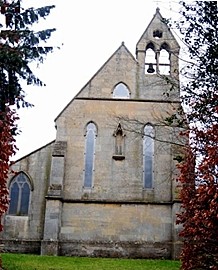 |
|
Congregations continued to fall and in 2004,
services were reduced to one mass a month, on a Thursday evening.
The church was eventually closed in 2012 after the last mass was
held on Wednesday 29th February, attended by the Bishop of
Nottingham, and the trustees of the Diocese of Nottingham will now
decide the fate of the building. Father Dolan said the decision to
close was a difficult one. ďA number of efforts were made by a lot
of people but we came to the conclusion that we just could not keep
it open", he said. "It was a very sad day indeed and we do not know
what the future will hold for it." |
|
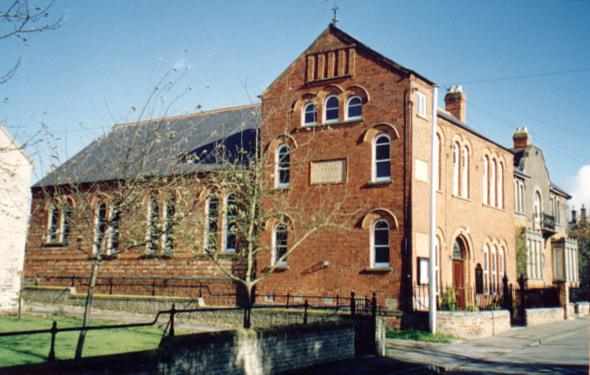 |
There was a revival towards the end
of the century and a new chapel was built in 1902, pictured left,
at a cost of £860 while the original building was sold and has
since been converted for use as a private home. |
There
was an active Sunday school but this closed in 1986 through lack of support
although there is still sufficient interest in Methodism in the village to keep
the chapel going and members celebrated its centenary with special services in
September 2002.
Trade has always been a feature of life in Corby Glen and the church registers reveal a variety of occupations down the ages, apothecaries, peruke and stay makers, saddlers and tailors while the village once boasted nine public houses to cater for a busy trading community but the market has long since gone and only three of the hostelries survive, the Fighting Cocks, the Glaziers Arms and the Woodhouse Inn,
renamed the Coachman in September 2001, which appears to be quite sufficient for a village of under 600 electors.
Corby Glen once had the status of a small market town and even now is big enough to boast two medical practices and three public houses. The village has
also had several schools in the past, the most illustrious being Reads Grammar School
dating back to the 17th century and now home to the Willoughby Memorial Library. The
new school that replaced it opened in 1963 and has developed into a successful comprehensive serving a wide area of South Lincolnshire from Grantham in the north to Stamford in the south and from Bourne in the east to the west of the
A1 and was renamed the Charles Read High School in September 1999. Many modernisations and improvements have been made over the years and there was a major investment in modern equipment during 2001. The school now has a network of computers
that are available in every classroom, all linked to the Internet and each student has
his or her own e-mail address.
Corby Glen Primary School occupies the old stone-built premises that once housed the village Board School, built in Station Road in 1878 and still the focus of primary education in the parish. It currently has a staff of five and over 100 pupils aged from four to eleven. The declared approach to discipline is: "We live by a shared code of conduct, respecting each other's persons, feelings and property."
It was originally the village scout hut but for over a quarter of a century has been selling the necessities of life to those who have either not been to the supermarkets of nearby towns or have forgotten one or two essentials and the warm and welcoming interior is a cornucopia of domestic wants from washing powder and polish to sauce and sweets and ice cream. Pauline will even accept your dry cleaning.
There have been adverse comments in the past about Corby Glen but anyone who criticises the village does so at their peril and is likely to end up in the stocks and be pelted with rotten vegetables. Such was the fate of the radio producer Wilfred De'Ath who spoke disparagingly about the village in a B B C Radio Four series some years back and suffered such a fate, albeit voluntarily as a form of contrition but his public indignity was no less embarrassing.
|
THE OLDEST AND THE PROUDEST
Street names are usually reserved for the
great and the good of the country or the county but Corby Glen has
departed from tradition by giving the honour to its oldest
resident. In November 2001, the parish council decided to call
their newest street Pridmore Road after Mrs Evelyn Pridmore who
was 101 and she was even asked to attend an official naming
ceremony at a new housing development just off the main High
Street. Mrs Pridmore said she was
thrilled that her family name was to be preserved, having been
connected with Corby Glen since moving there from her home town of
Bourne in 1926 and had become well known in the village by running
a sweet shop, helping with her husband's taxi business and as an
active member of the British Legion. She was also a stalwart of
two other organisations that have now closed down, the Fellowship
Club and Pig Club, formed in those days when many families kept
their own pigs. |
|
PHOTO ALBUM |
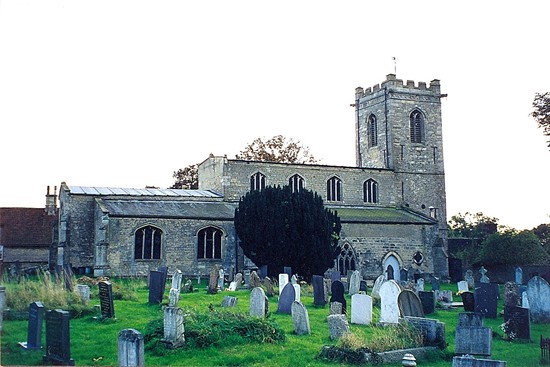 |
|
The parish church at Corby Glen and the
interior (below). |
 |
|
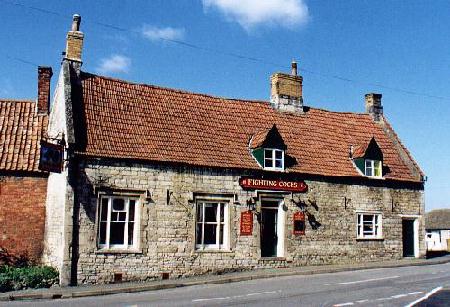 |
|
The Fighting Cocks is 18th century although it is almost certain that there has been an inn on this site for a thousand years because the name survives from the days when cock fighting was a popular sport and many taverns had a cock-pit on the premises. |
|
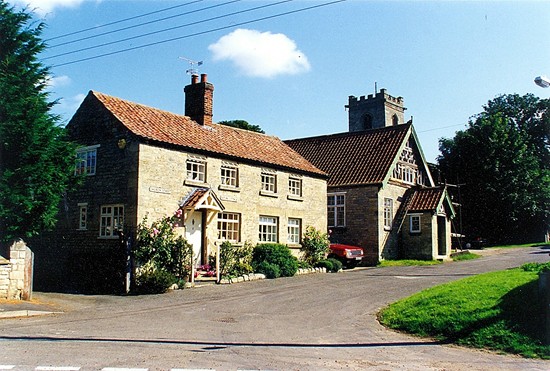 |
|
The village hall or church rooms at Corby Glen can be found at No 7
Church Street next to the charming Exton Cottage and easily
identified by a distinctive porch and attractive gable end with the
tower of St John the Evangelist Church
peeping above the roof. |
|
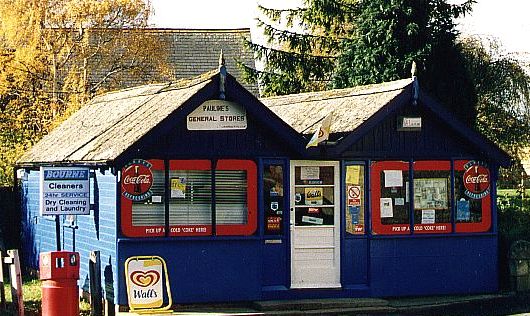 |
|
Pauline's General Stores at Corby Glen is one of those incongruities of life, a blue-painted wooden building in the market place of a predominantly stone built village, yet looking as much a part of the place as any of its ancient companions. |
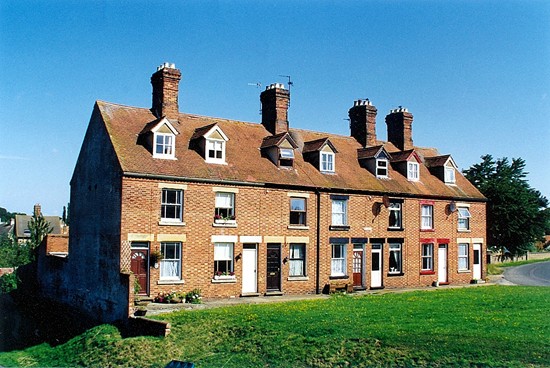 |
|
Various buildings sprang up to encroach upon
the village green at Corby Glen in the late 19th century, the first
of them being this strikingly attractive red brick terrace of seven
houses for working families known as New Row, erected in 1888 and
still providing a useful service today. |
|
CORBY GLEN IN PAST TIMES |
|
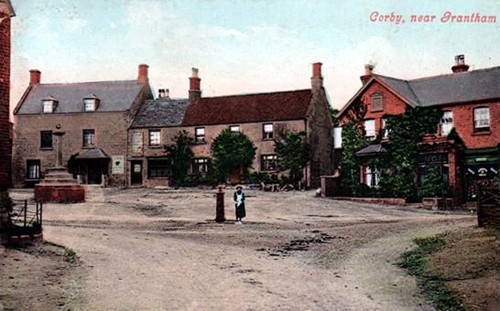 |
|
 |
|
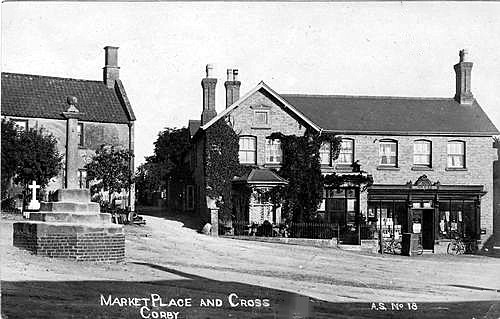 |
|
Picture postcards of the village, the
coloured view from circa 1890 and the two below taken by the Bourne
photographer Ashby Swift
showing the market place circa 1905. |
|
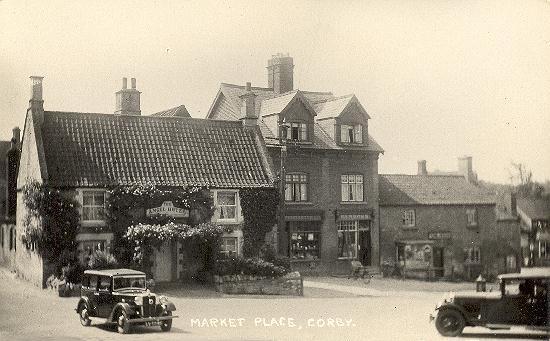 |
|
The market place, circa 1920, showing
the Angel Hotel on the left, now
a private house (above). The photograph below shows the village in
1960. |
|
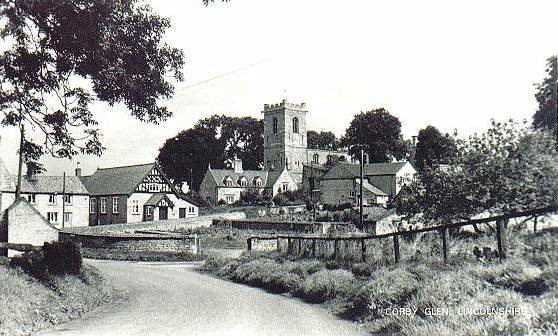 |
REVISED MAY
2015
See also
The Willoughby
Memorial Library Corby Glen Sheep Fair

Go to:
Main Index Villages
Index
|













